This post may contain affiliate links. For more information, please see our affiliate policy.
The softest, fluffiest, and best scrambled eggs are only 7 minutes away. Grab some some butter and a skillet; it’s time to master How to Scramble Eggs once and for all.
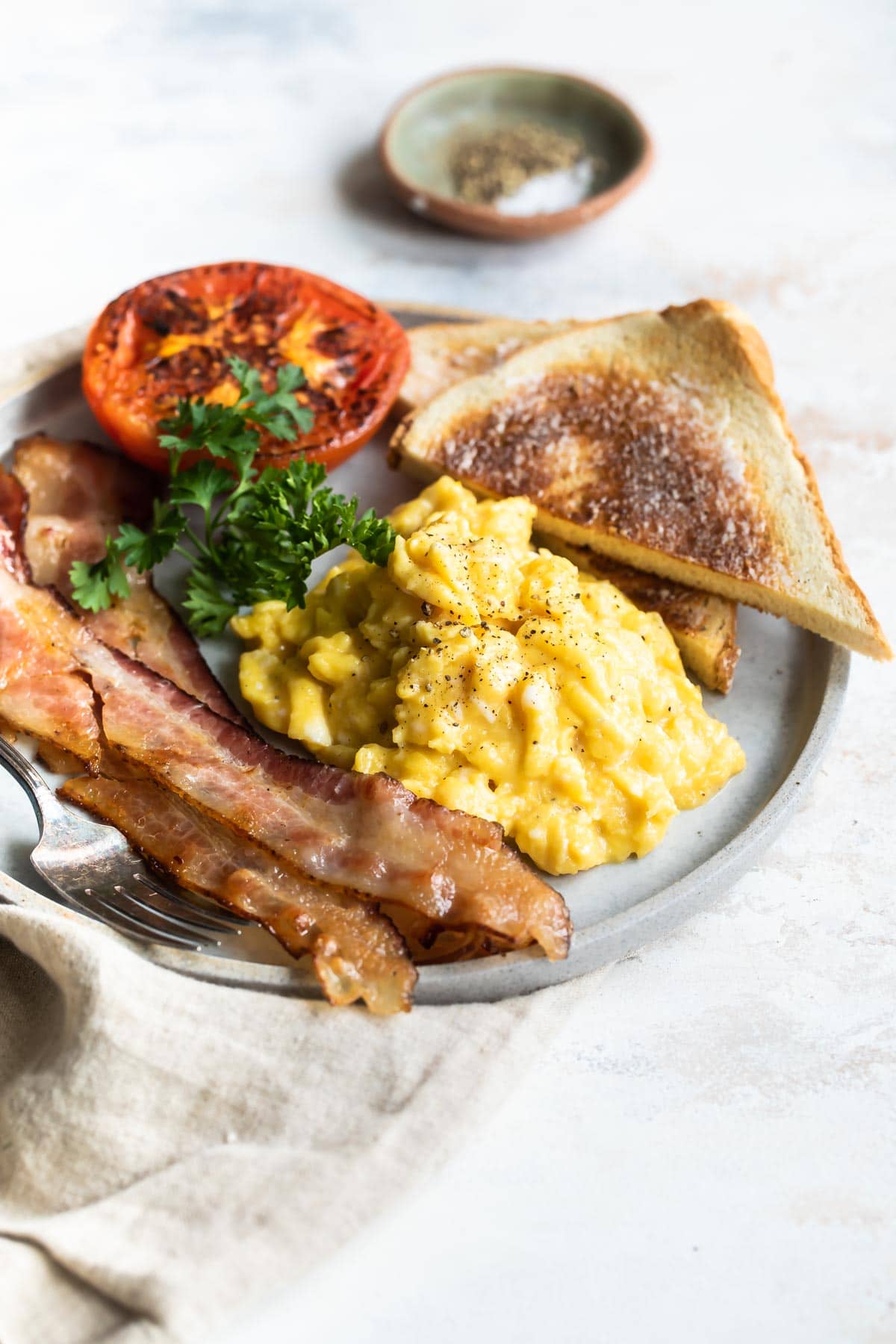
If you think you don’t care for scrambled eggs, toss those associations out the window and start with this complete guide to mastering the perfect scramble. No more dry, tough, browned rubbery eggs! All you need is a little butter and as many eggs as you can devour.
Table of Contents
Recipe ingredients
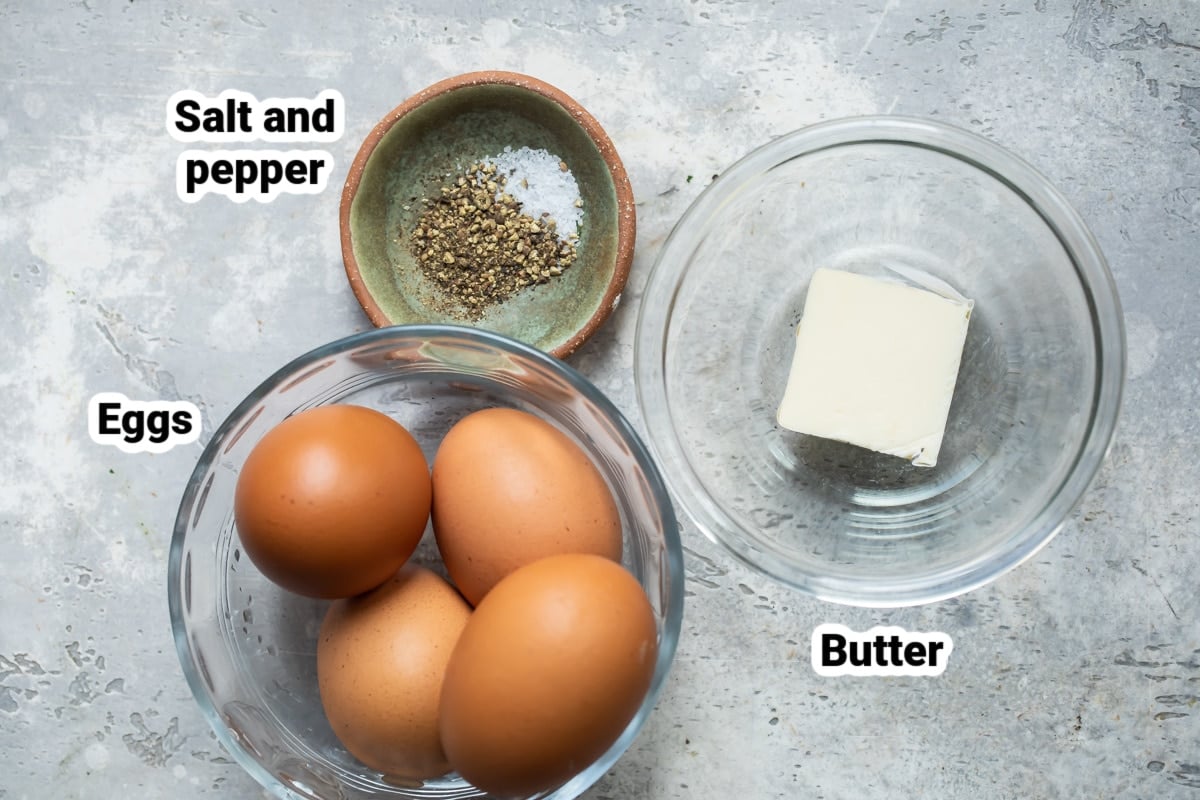
At a Glance: Here is a quick snapshot of what ingredients are in this recipe.
Please see the recipe card below for specific quantities.
Ingredient notes
- Eggs: Any size egg works here; bigger eggs just mean there’s more to eat.
- Butter: This scrambled egg recipe calls for butter, but feel free to swap in olive oil, a generous coat of cooking spray, clarified butter, or even a little bacon fat. Any kind of fat will keep the eggs loose and sliding around in the pan.
Step-by-step instructions
- In a medium bowl, whisk eggs vigorously, trying to incorporate as much air as possible. In a small non-stick skillet over medium-high heat, melt butter until foaming subsides and swirl to coat the entire inside surface of the pan.
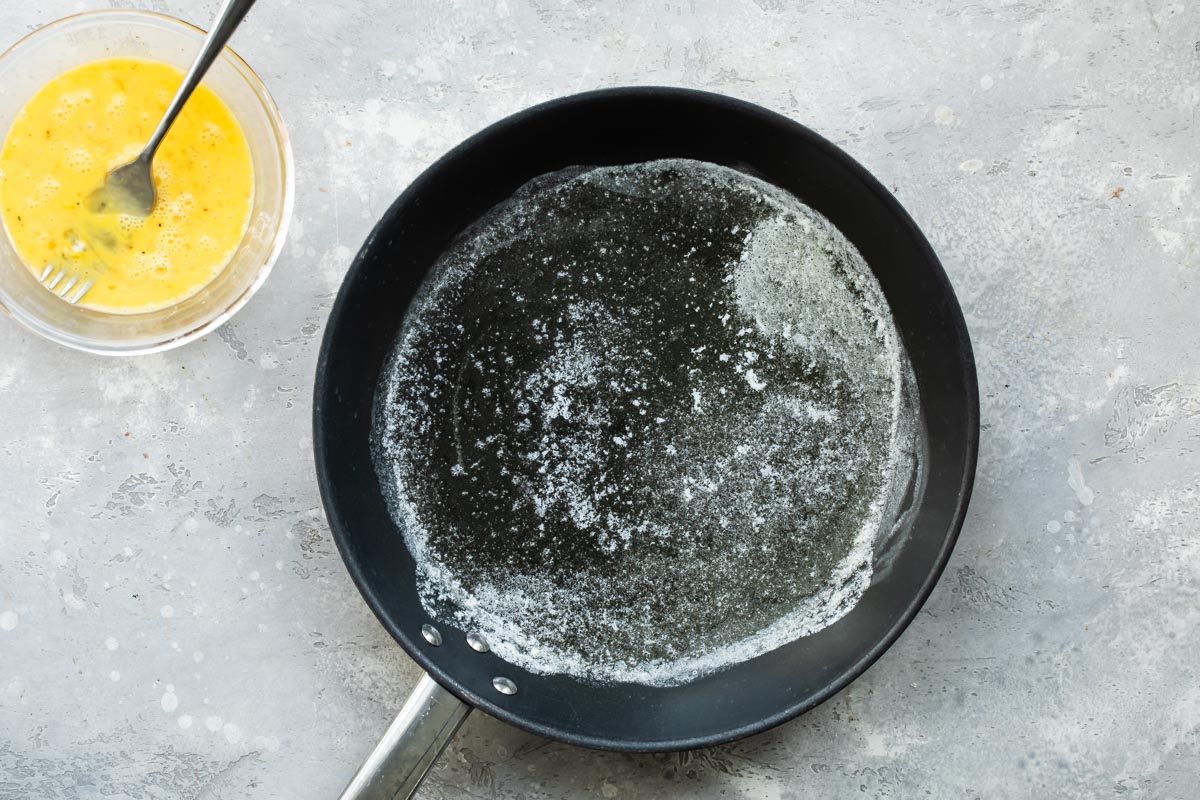
- Pour in eggs into the center of the pan and reduce heat to medium. This will push any butter to the sides of the skillet and prevent them from sticking.
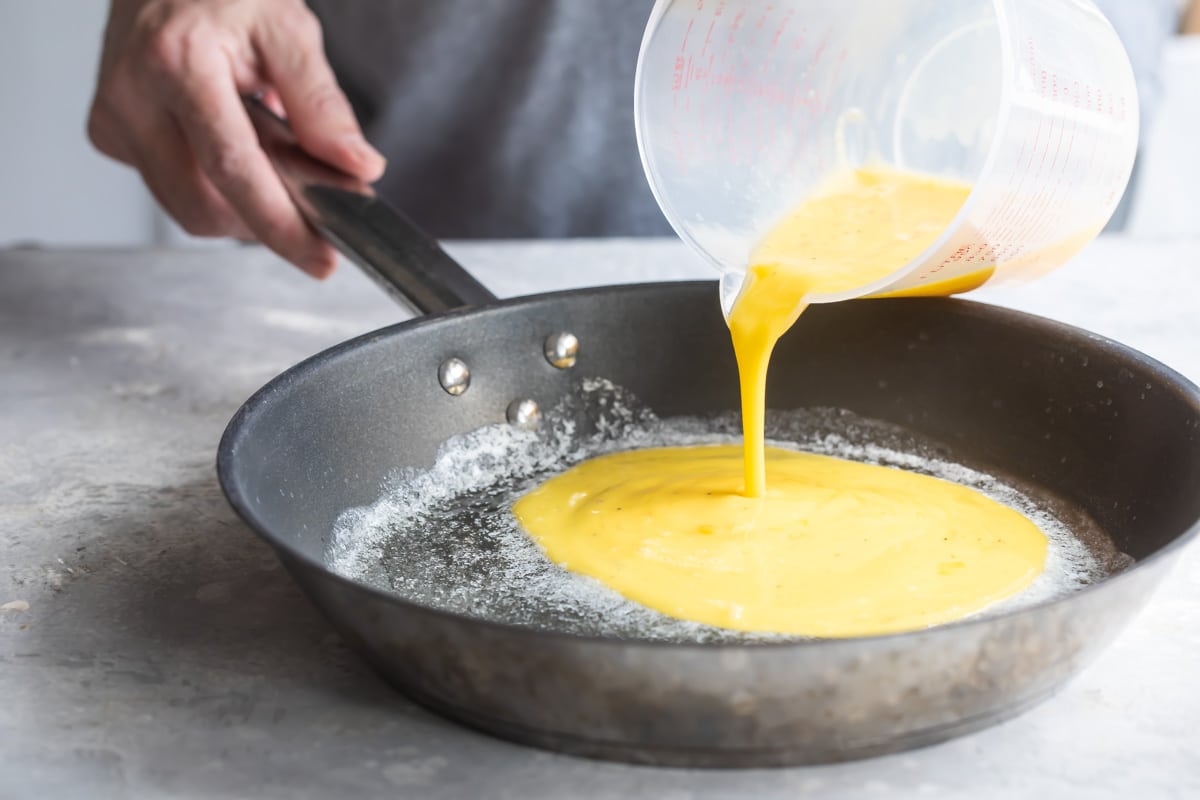
- Gently move the eggs from one side of the pan to the other with a rubber spatula as they begin to set. Without flipping the eggs, continue to push the eggs from side to side until cooked through, about 3 minutes.
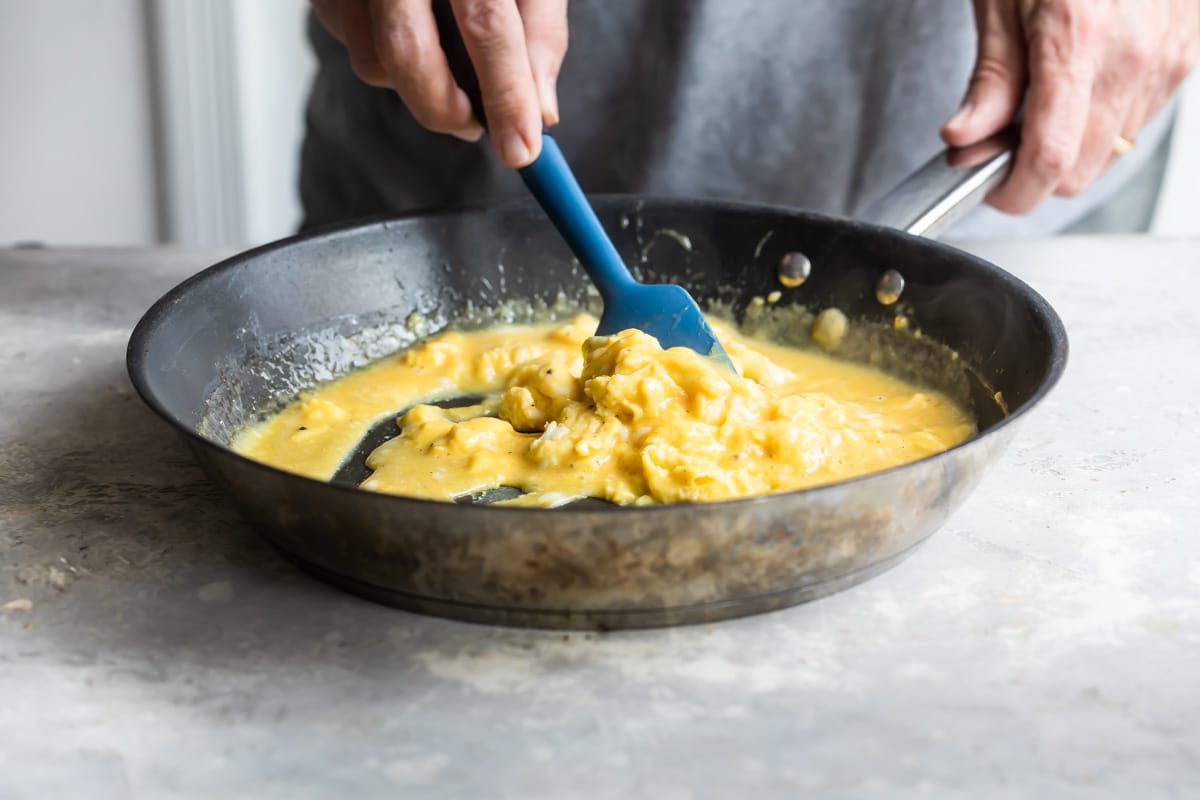
- Remove immediately, season with salt and pepper to taste if desired, and serve.
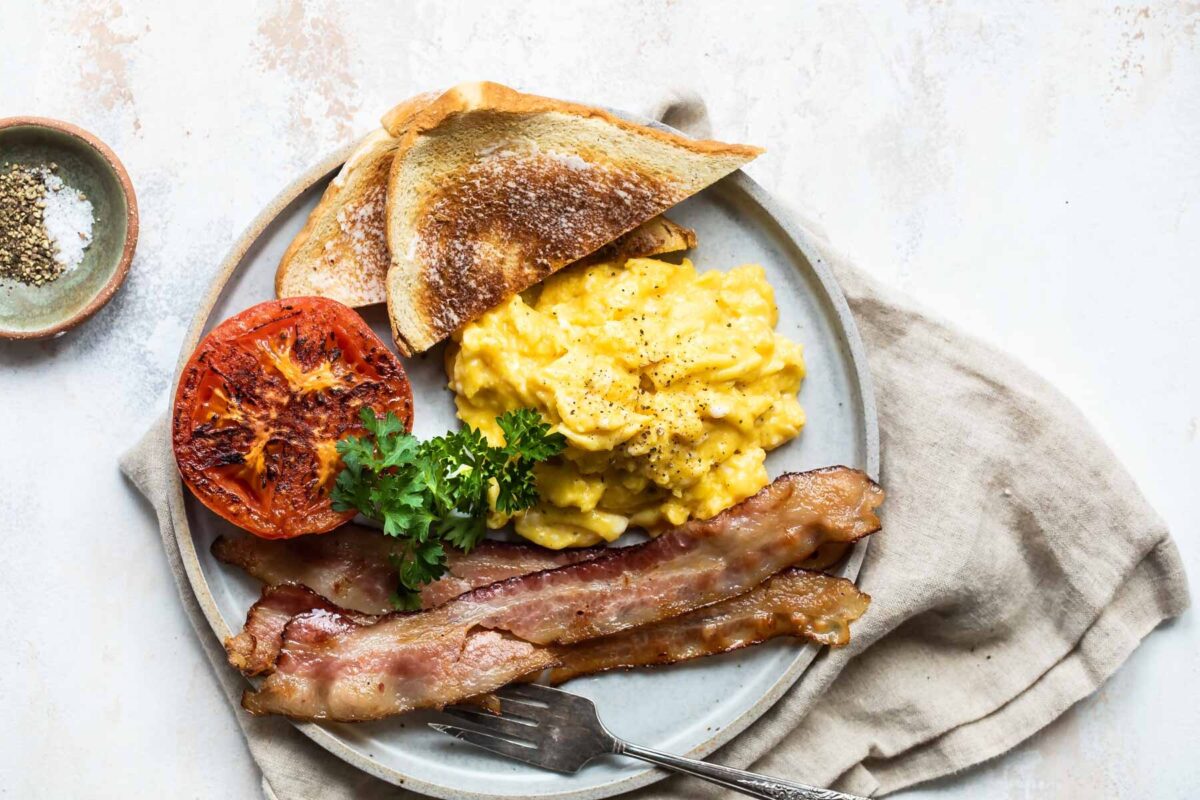
Recipe tips and variations
- Yield: This recipe makes 2 servings, 2 scrambled eggs each.
- Storage: That being said, you can certainly store any leftovers in a covered container in the refrigerator. Eat within 3 to 4 days.
- Make ahead: Scrambled eggs are at their most delicious when made à la minute, or at the moment you need them.
- Freezer: Yes, you can freeze scrambled eggs! Allow them cool, then store in a freezer-safe container, label, date, and freeze for up to 2 to 3 months. Thaw overnight in the refrigerator, then gently reheat in the microwave. You can also freeze raw eggs for up to 1 year, as long as they’re not in the shells.
- Paleo and Whole30 Compatible: Substitute clarified butter for the regular butter.
- Milk: There are those who swear by it but you really don’t need to add additional dairy. Even a splash of milk or cream to scrambled eggs can make them err on the rubbery side and may detract from the egg flavor.
- Medium heat: Medium or even medium-low heat works best for a moist, soft scramble.
- Tool tip: Use a silicone or rubber spatula to keep the eggs moving.
- Cheese: If desired, add a little grated cheddar or Swiss cheese over the top of the eggs as soon as you pour them into the pan. Follow the same steps, letting the cheese melt as you push the eggs around in the pan. By the time the eggs are scrambled, the cheese will melt into the eggs and be ready to devour.
- Herbs: A sprinkle of chopped fresh chives, basil, or thyme would taste incredible if you have one of those handy.
- Complete your breakfast menu: Serve scrambled eggs atop a hearty serving of Corned Beef Hash, alongside sweet and savory Pulled Pork Pancakes with Whiskey Maple Syrup, or with some moist and crispy Challah French Toast.
Frequently Asked Questions
A standard non-stick pan is excellent for scrambling eggs. A well-seasoned cast-iron skillet or carbon steel pan can also do the job nicely.
On average, one serving of scrambled eggs is 2 eggs. But have as many as you want!
Tuck leftover scrambled eggs into a Breakfast Burrito or a warm tortilla with a slice of avocado and a squirt of hot sauce for a delicious breakfast or snack.
More breakfast recipes
Breakfast Recipes
Sweet Potato Hash
Breakfast Recipes
Homemade Pancakes
Appetizer Recipes
Mini Quiche Recipe
Breakfast Recipes
Corned Beef Hash
Join Us
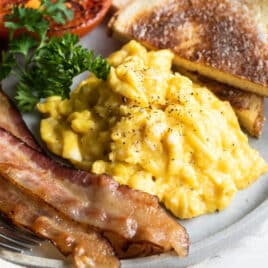
How to Scramble Eggs
Ingredients
- 4 eggs (see note 1)
- 2 teaspoons butter (see note 2)
- Salt and freshly ground black pepper
Instructions
- In a medium bowl, whisk eggs vigorously, trying to incorporate as much air as possible.
- In a small non-stick skillet over medium-high heat, melt butter until foaming subsides and swirl to coat the entire inside surface of the pan.
- Pour in eggs into the center of the pan and reduce heat to medium. This will push any butter to the sides of the skillet and prevent them from sticking.
- Gently move the eggs from one side of the pan to the other with a rubber spatula as they begin to set. Without flipping the eggs, continue to push the eggs from side to side until cooked through, about 3 minutes.
- Remove immediately, season with salt and pepper to taste if desired, and serve.
Notes
- Eggs: Any size egg works here; bigger eggs just mean there’s more to eat.
- Butter: This scrambled egg recipe calls for butter, but feel free to swap in olive oil, a generous coat of cooking spray, clarified butter, or even a little bacon fat. Any kind of fat will keep the eggs loose and sliding around in the pan.
- Yield: This recipe makes 2 servings, 2 scrambled eggs each.
- Storage: That being said, you can certainly store any leftovers in a covered container in the refrigerator. Eat within 3 to 4 days.
Nutrition
Meggan Hill is a classically-trained chef and professional writer. Her meticulously-tested recipes and detailed tutorials bring confidence and success to home cooks everywhere. Meggan has been featured on NPR, HuffPost, FoxNews, LA Times, and more.

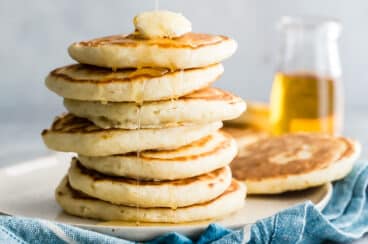

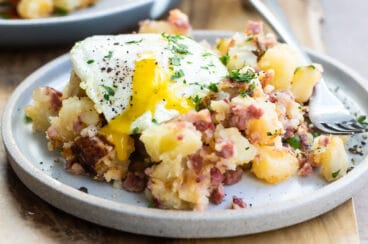
I’ve been a short order cook for 25 years and what I have found that pleases most crowds is lowering the salt content, you’re suggesting of salting and peppering the eggs when mixing,than, using salted butter and then salt and pepper season to taste afterwards,🤮 I I’ve had too many plates of eggs return to the kitchen because of this and had to remake them over again, many customers over salt and pepper their eggs at the table when they get them,I also use half&half in my eggs
Hi Curt, you’re absolutely right. There is no reason to salt and pepper the egg mixture before cooking the eggs. I’ve even heard that doing so will mean less fluffy scrambled eggs (some scientific reason related to the salt). I’ll fix my recipe and I appreciate the feedback. Thank you! -Meggan